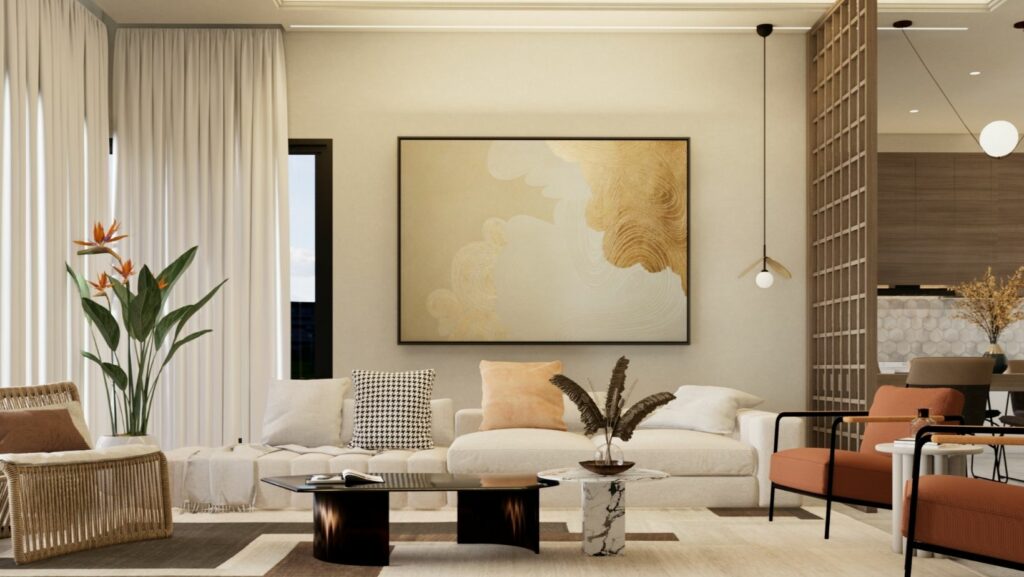A living room without a focal point can feel… unfinished. Even with nice furniture, fresh paint, and good lighting, the room might still seem a bit off — like it’s missing something. That “something” is usually a clear visual anchor that pulls the space together and gives your eyes somewhere to land.
This is where the right TV unit ideas can make all the difference. Creating a well-styled entertainment zone isn’t just about where the telly goes — it’s about giving your room structure, balance, and a sense of purpose.
Why a Focal Point Matters
A focal point acts like the headline of a room. It’s the first thing people notice when they walk in and helps everything else fall into place. Without one, the room can feel cluttered, directionless, or awkwardly laid out.
In many homes, the TV wall naturally becomes the focal area — and with the right setup, it can be just as stylish as it is practical. The key is not just the screen itself, but how it’s framed and supported by the furniture around it.
Start with Placement and Symmetry
If your room has no obvious focal feature (like a fireplace or large window), create one by placing your TV unit against the most prominent wall — ideally opposite or central to your seating.
From there:
- Keep the unit centred on the wall
- Match the size of the TV to the width of the unit
- Leave equal space on both sides for visual balance
This symmetrical layout helps the room feel more intentional — even before you start styling.
Make the Unit Work for Your Room
Choosing the right TV unit is more than just picking a nice-looking piece. It’s about scale, shape, and how it serves your lifestyle.
Here’s what to consider:
- Size: Your unit should be slightly wider than the TV for a grounded look
- Storage: Opt for a mix of drawers, cabinets, and open shelves to hide mess while showcasing personal items
- Material: Pick a finish that complements your other furniture (e.g. timber tones, black metal, white gloss)
- Function: Built-in cable management and ventilation are a must for tech-heavy setups
Think about the visual “weight” of the piece too. A chunky timber unit will dominate the space, while a floating shelf style can make a room feel lighter and more open.
Build Around the Focal Area
Once your TV unit is in place, style the space around it so it feels cohesive. You can create structure and warmth with just a few simple elements:
- Wall-mounted shelves to display books, plants, or frames
- Low-profile lighting like a floor lamp or sconce nearby
- Rug placement that’s centred in relation to the unit, not the couch
- Artwork or décor above or beside the screen to soften the tech look
 The goal is to make the TV area feel integrated — not like an afterthought.
The goal is to make the TV area feel integrated — not like an afterthought.
Other Focal Point Alternatives
Not every living room needs to revolve around the television. If you’d rather downplay the screen or your layout doesn’t allow for a central unit, here are some other options:
- Statement art wall: A large print or gallery-style grouping can grab attention
- Feature shelving: A styled bookcase with colour-coordinated accents
- Accent wall: Paint or wallpaper one side of the room for a pop of interest
- Indoor plant corner: A mix of floor plants and hanging greenery can double as a natural focal point
That said, most modern Aussie homes still use the TV wall as the go-to visual anchor — which makes it a great place to start if you’re rethinking your space.
Small Update, Big Difference
Fixing a living room with “no focal point” doesn’t mean starting from scratch. With the right strategy, it’s just a matter of shifting your layout, choosing the right centrepiece (like a well-proportioned TV unit), and styling the space around it.
It’s the kind of weekend project that doesn’t require paint or power tools — just a bit of planning and a few smart design choices. And once that focal point is in place, the whole room tends to fall into place with it.
